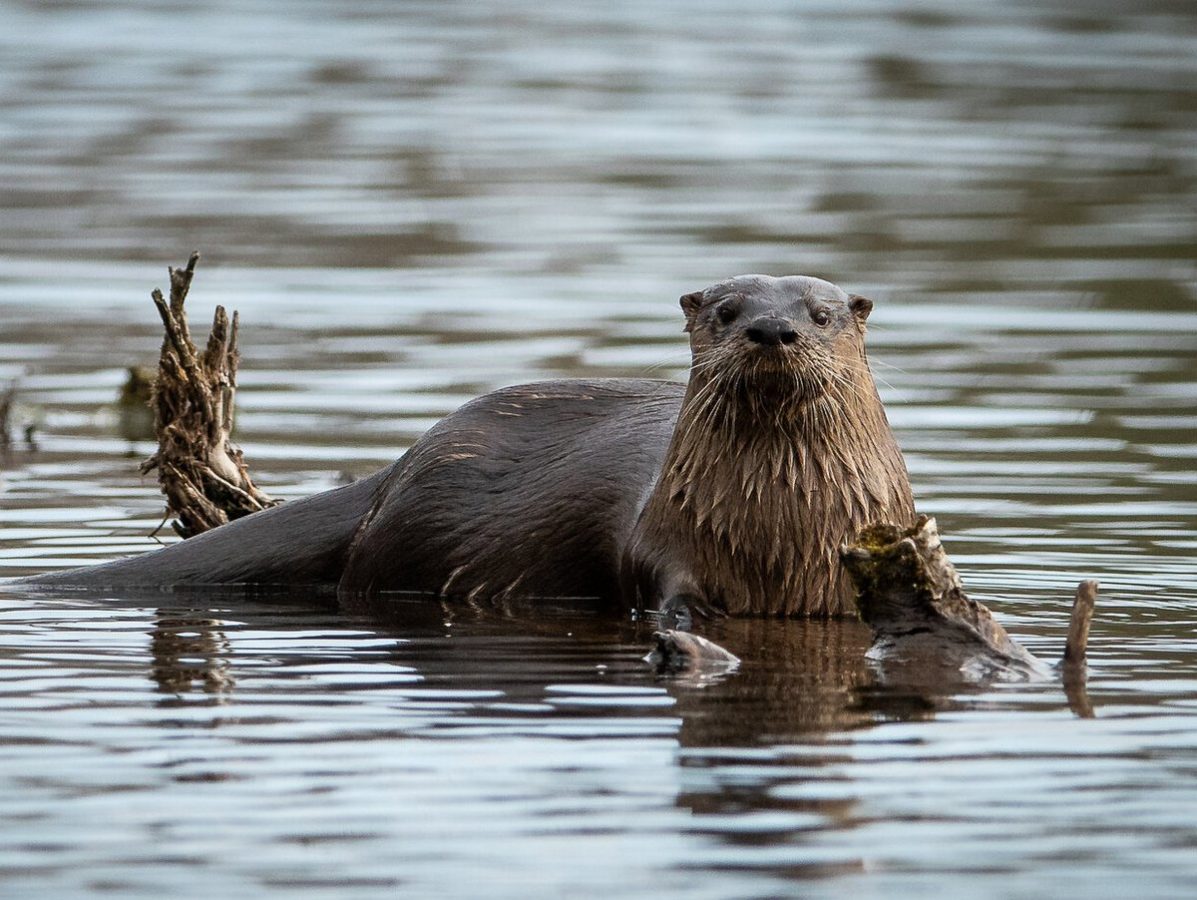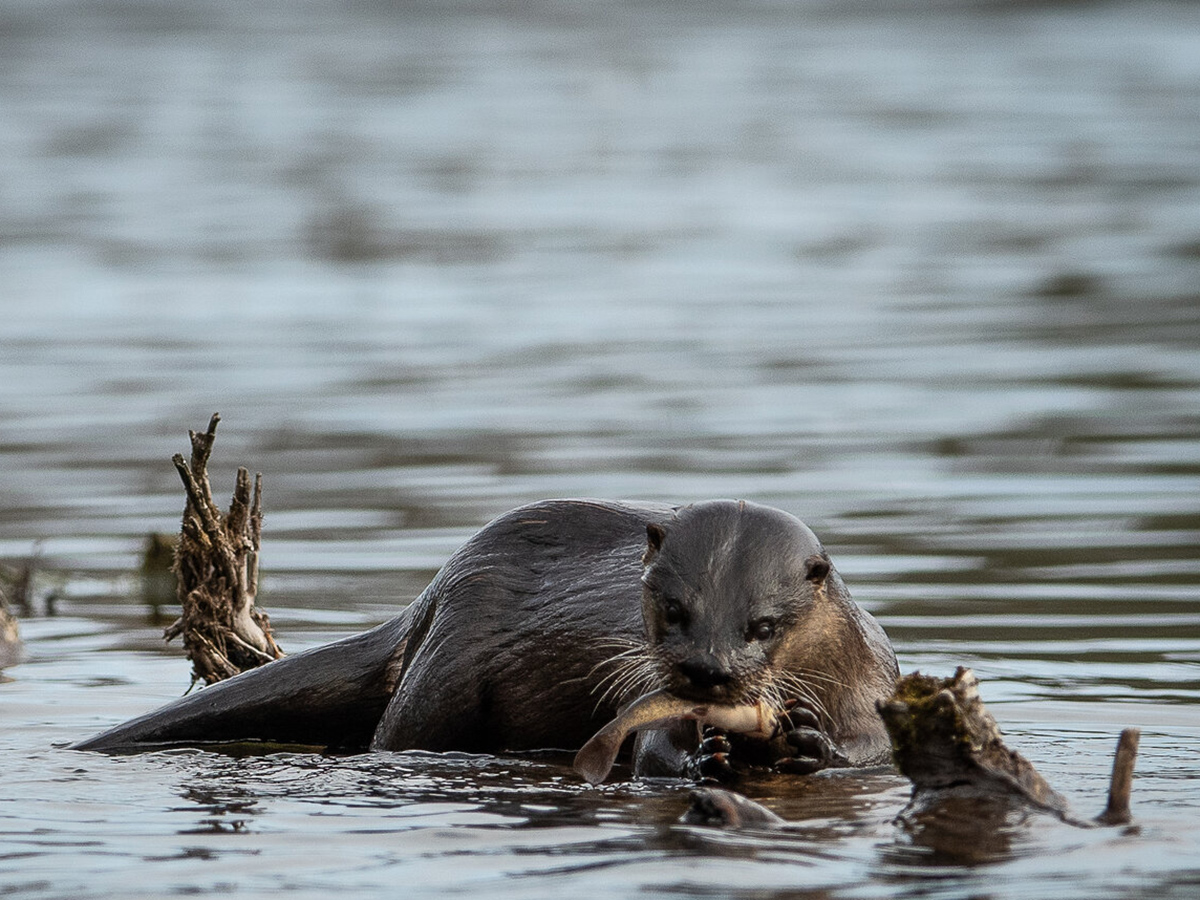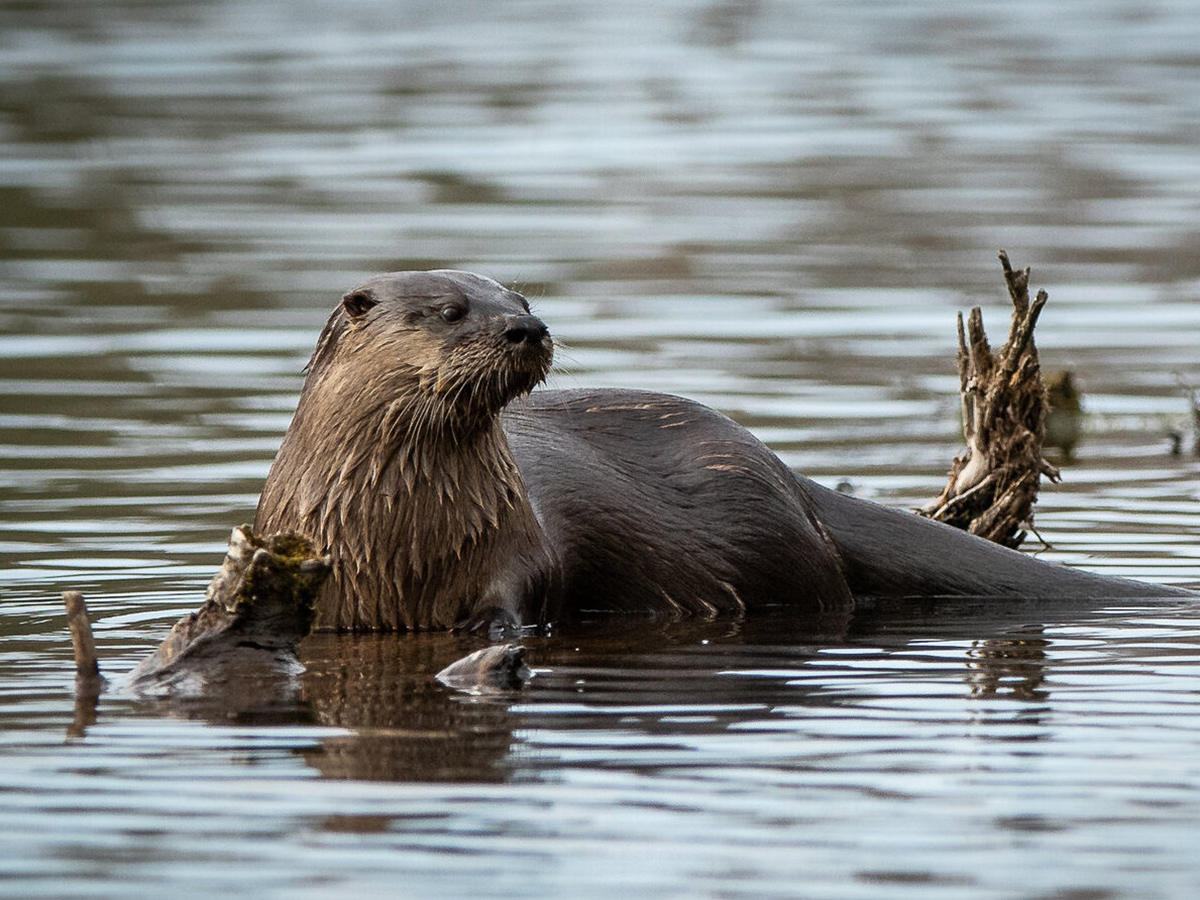Izaak Walton’s treatise, The Compleat Angler (1653), is a meditation on the practice and poetry of sport fishing. Walton has little affection for river otters, which he believes must be exterminated because they take the fish that sportsmen want to keep for themselves.
Yet, he explains, their predatory nature can also be handily exploited by human fishermen. Otters captured as pups can be trained to bring back fish or to drive them into waiting nets. Otter fishing is surprisingly ancient and widespread: Marco Polo reported seeing Chinese fishermen using trained otters, and the practice is known to have existed on every continent where river otters are found.
Our local otter species – which European settlers were still using as a fishing companion as late as the nineteenth century – is the North American river otter (Lontra canadensis). It inhabits the same inland wetlands as beavers and muskrats. These three brown furbearers might at first glance be confused with each other, but they are from very different families. Beavers and muskrats are rotund, frumpy rodents, whereas the river otter is a mustelid, a fierce and sleek carnivore related to weasels and fishers. His flat head, which is topped by tiny ears, big eyes, and a wide nose, do not merely help him catch fish in murky water but also give him the cutest face in the Finger Lakes. The word otter is related to the Greek word hydra, or water-serpent. He does indeed look a bit like a furred eel or a small seal: as Izaak Walton says, he seems to be neither fish nor flesh. On land, his lithe, liquid leap-bounds are unmistakable, even from a distance. He slides on mud or snow whenever he can to save energy, leaving fluid tracks behind. And in the water, he is pure mermaid.
However, the long, streamlined shape that makes the otter such an agile aquatic hunter is also a serious liability. The large surface-to-volume ratio of his body plan loses heat very quickly in cold water, a particular problem because otters do not hibernate and must feed themselves constantly. Massive marine carnivores such as whales are protected by thick layers of blubber. But the otter is small and must remain supple in order to loop and harrow after fish; he cannot accumulate fat that might slow him down or render him too buoyant.
In place of fat, he has a luxurious, oily pelt. His underfur is almost unimaginably dense and velvety, and is further protected and insulated by long, hollow guard hairs. Under an electron microscope, individual hairs look a bit like the segmented stems of Christmas cactus; the fins that project from each hair interlock when the fur is mussed. Through a variety of adorable grooming behaviors, the otter knits his fur into a glossy wetsuit that keeps his skin perfectly dry.
For all the river otter’s resilience, he is also quite delicate and quickly disappears from polluted wetlands. As an apex predator, otters were never as numerous as other furbearers, and overhunting decimated their numbers. By the early 1990s, they were gone from western New York and rare in the rest of the state. There is, of course, little interest in reintroducing extirpated predators that might pose threats to humans, such as cougars and wolves. However, almost everyone agreed that the charismatic otter deserved to return. (Otters, it should be said, are shy but can be fierce: do not approach them.) Thus the New York River Otter Project was formed, a joint effort involving the NYS DEC, veterinarians from Cornell, numerous non-profit organizations, trappers, wildlife rehabilitators, and a group of enthusiastic citizens led by Dennis Money. Over several years, otters were trapped in the Adirondacks and released into the Finger Lakes and Genesee River. Now, twenty years later, the otters seem to have recovered and the project has set the standard for river otter reintroductions in both the U. S. and worldwide. It is a task made more urgent by the fact that most river otter species are in steep decline. Otters have assisted humans for thousands of years; it is now time for us to return the favor.




